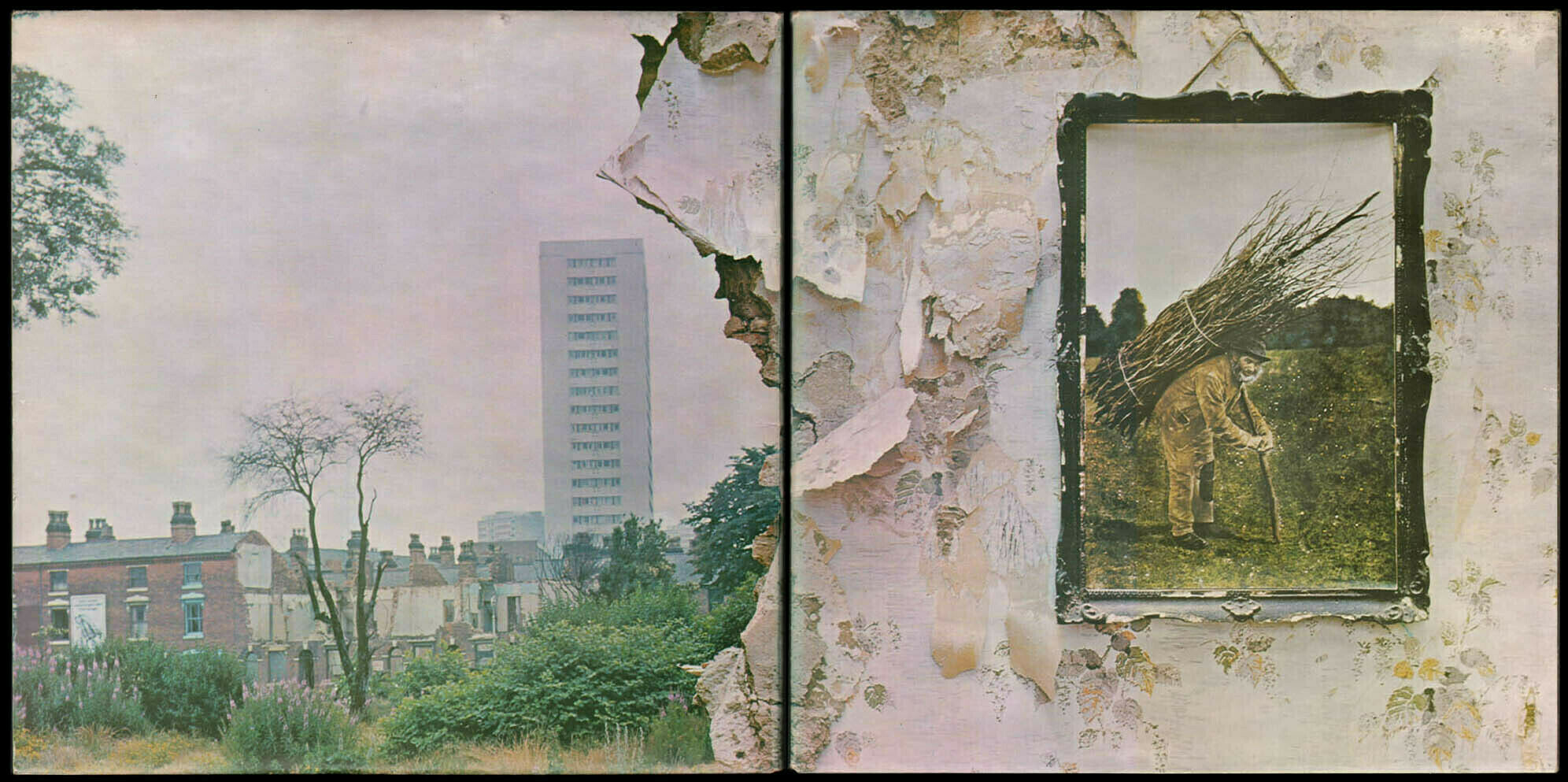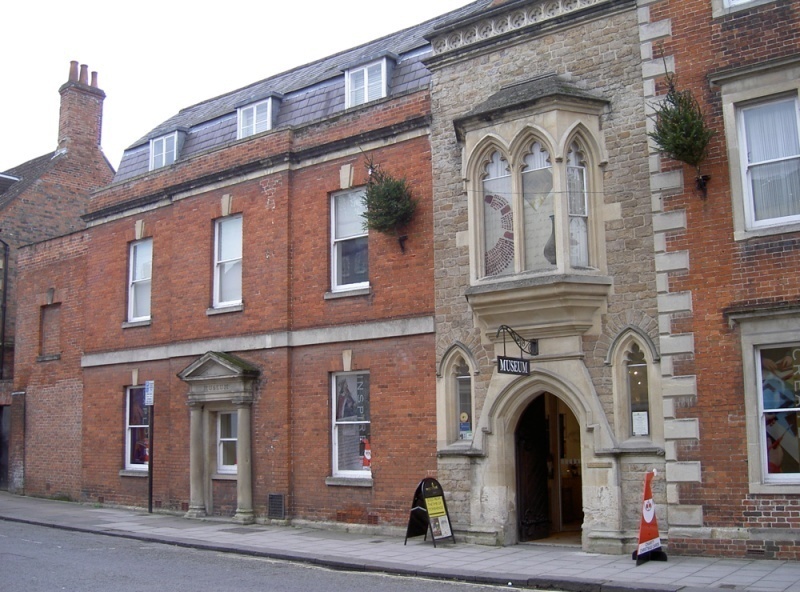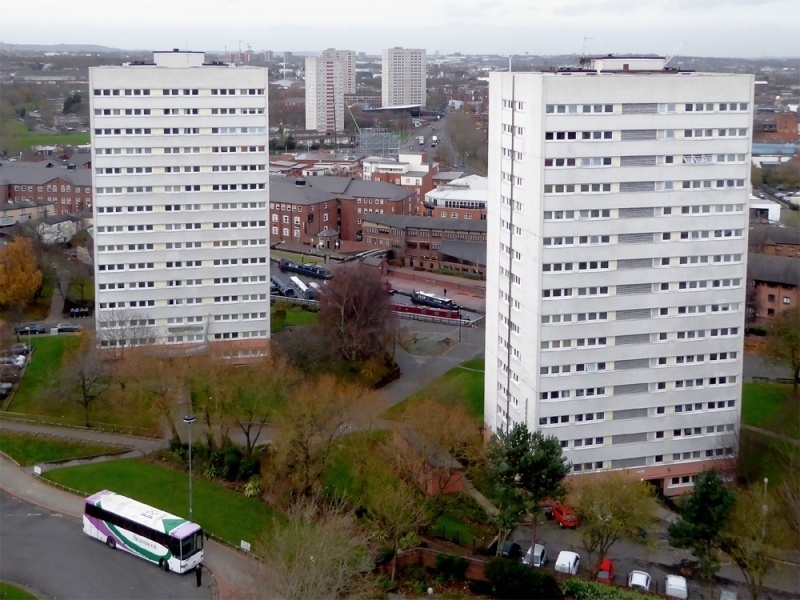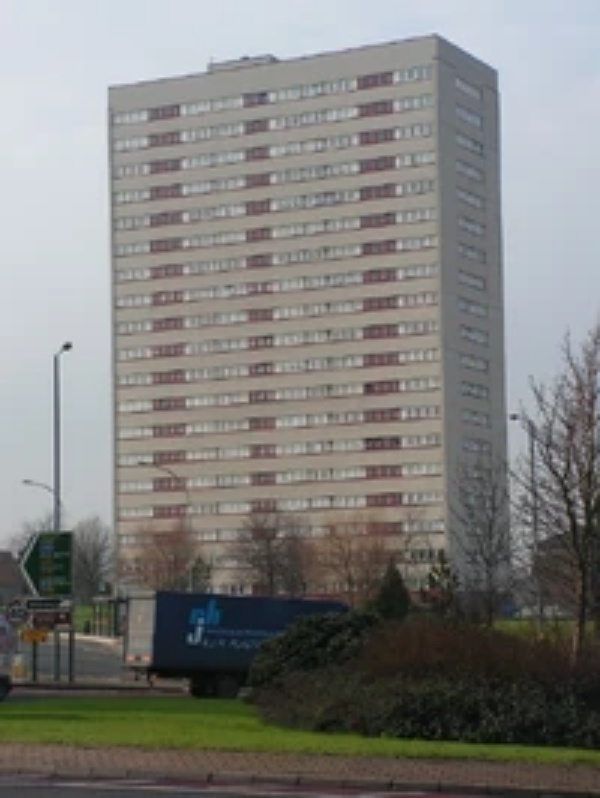
Posted on
On the iconic cover of Led Zeppelin IV (1971) we see an old man bent under a bundle of firewood — no title, no band name, wrapped in a halo of mystery that has lasted for more than half a century. Behind this image is Lot Long, a thatcher from Wiltshire, photographed in 1892 by Ernest Howard Farmer, a pioneer of Victorian photography.
The original shot, titled A Wiltshire Thatcher, remained hidden until 2023, when the Wiltshire Museum identified and acquired the negative, bringing back to light the real story behind the “man with the sticks” that Robert Plant found in an antique shop and turned into a symbol of the album. We’ll tell you more about that later.
The choice of this photo was no accident: Led Zeppelin wanted to contrast 19th-century rural life with the modernity of the 1970s — something we also see on the back cover, which shows Birmingham’s Salisbury Tower, a symbol of that decade’s urban innovation.
Together, both images confront us with the clash between old and new, rural and urban, turning the front and back covers of Led Zeppelin IV into a true historical and artistic document.
Keep reading and we’ll show you where to find these references in real life — something we always try to do at Viajeros Metaleros 😉
The cover of Led Zeppelin IV: The Wiltshire Lumberjack

Original Victorian photograph “A Wiltshire Thatcher” (1892), taken by Ernest H. Farmer.
It depicts Lot Long, an elderly thatcher carrying firewood, an image Led Zeppelin used on the cover of Led Zeppelin IV. It is housed in the Wiltshire Museum (Devizes, UK).
The iconic cover of Led Zeppelin IV (1971) features an old farmer hunched under a bundle of branches, with no text or mention of the band. For decades, a legend grew over the mystery of whether the image was a painting or a photograph. The reality is that it’s a Victorian photograph from 1892, titled “A Wiltshire Thatcher,” taken in rural Wessex, England. The author was Ernest Howard Farmer (1856–1944), a photography pioneer and the first director of the School of Photography at London’s Regent Street Polytechnic (now the University of Westminster).
The original black and white image shows Lot Long (also known as Longyear), a thatcher born in 1823 in Mere, Wiltshire. Long was 69 years old at the time of the photo, a widower, and living in a small cottage on Shaftesbury Road, Mere. Farmer captured Long posing with his load of firewood during the Whitsuntide festival of 1892, possibly on the outskirts of Shaftesbury, depicting scenes from the Victorian English countryside. I add that the museum states that this identification has not been confirmed.

Entrance to the Wiltshire Museum (Devizes, UK), which houses the original photograph of the “Lumberjack” from the cover of Led Zeppelin IV. In 2024, the museum hosted the exhibition “A Wiltshire Thatcher – a Photographic Journey through Victorian Wessex” , showcasing the work of Ernest H. Farmer.
The original photograph Led Zeppelin based their cover on remained hidden until almost the present day. In 1971, Robert Plant found a colorized version of the photo (framed as a picture) in an antique shop in Reading, near Jimmy Page’s home in Pangbourne, Berkshire. The band bought the colorized photo and hung it on the ruined wall of a house to photograph it as the album cover, deliberately creating a connection between the past and the present .
Singer Robert Plant explained that they wanted to “symbolize the contrast between the old and the new” : hence the rural image of the old man carrying firewood and the urban scene behind him on the back cover.
To top off the mystery, the final cover of Led Zeppelin IV has no text, which increases its enigmatic and timeless air.
Half a century later, in 2023, researchers at the Wiltshire Museum identified the origin of the photo and its original negative. Historian Brian Edwards discovered a Victorian photo album auctioned online containing the black-and-white image of the “Log Man.” The album, titled “ Reminiscences of a Visit to Shaftesbury. Whitsuntide 1892. A Present to Auntie from Ernest,” was a photographic work by the British Museum.
Whitsun 1892. A Gift from Ernest to Aunt”), included over 100 photographs of the Wiltshire, Dorset, and Somerset regions. Beneath the photo of the old man, photographer Farmer had inscribed “A Wiltshire Thatcher,” revealing its true documentary nature. The Wiltshire Museum acquired the entire album for its collection for £420. The original photograph is currently part of the museum’s collection in Devizes, England. In 2024, the museum opened the exhibition “A Wiltshire Thatcher – A Photographic Journey through Victorian Wessex,” dedicated to Farmer, with the photo of the old man immortalized by Led Zeppelin as its centerpiece. It is not currently on display in the permanent collection. I contacted the museum, and this was their response:
The ‘Wiltshire Thatcher’ photograph belongs to Wiltshire Museum, and it is part of the permanent collection. It was photographed by Ernest Farmer, but the Lot Long identification has not been confirmed. The photograph is pasted into an album with 100 other late Victorian prints, and it can be viewed by researchers with an appointment. It is not on permanent display. The exhibition featuring the photograph is detailed below, April – September 2024.
![]() METAL-NUGGET
METAL-NUGGET
Why did Led Zeppelin choose this photo of the Lumberjack?
The choice of this image for the cover reflects the album’s artistic concept. Jimmy Page and Robert Plant—farmers at heart in rock star bodies—wanted to contrast traditional rural life with the rampant modernity of the 1970s. Farmer himself, unwittingly, foreshadowed this contrast: his photos depicted the Wiltshire countryside in 1892, while he was working in industrial London. Seven decades later, Led Zeppelin took the idea further by featuring the elderly Victorian log collector with a devastated cityscape on the back cover.
The front and back covers together form a symbolic diptych: old versus new, rural versus urban . This artistic vision was captured without a single word on the cover, allowing the image of the rugged “lumberjack” to speak for itself on one of rock’s most legendary albums.
The back cover of Led Zeppelin IV: the Ladywood tower block, Birmingham

Image of Salisbury Tower by Roger Kidd, licensed under CC BY-SA 3.0. Residential towers in Ladywood, Birmingham, in the late 2010s. Norton Tower (left) and Crescent Tower (right) are seen in the foreground, with other 1960s Ladywood towers visible in the background. Salisbury Tower , the 20-story tower featured on the back cover of Led Zeppelin IV, is located in this same area of Birmingham.
On the back cover of Led Zeppelin IV, we see the other side of the album’s concept: a row of old, half-collapsed houses opposite a modern high-rise apartment block. This urban image, taken around 1970, corresponded to a working-class neighborhood in the midst of redevelopment. During the 1960s, English cities like Birmingham demolished numerous dilapidated Victorian homes to build modern apartment towers. Led Zeppelin chose this real-life setting to accompany the photo of the old farmer, emphasizing the visual clash between a crumbling past and a concrete present.
For a long time, there was a rumour that the tower on the back cover was in Dudley, Black Country, and it was even mistakenly claimed that it was Butterfield Court (a tenement building in Eves Hill, Dudley). This assumption may have arisen because Dudley was close to the childhood of drummer John Bonham , a native of the West Midlands. However, research and eyewitness accounts have confirmed that the tower in the photo is in Birmingham , not Dudley. Specifically, it is Salisbury Tower , a 20-story block located in Ladywood , a district west of Birmingham city centre. Salisbury Tower was built in 1968 by construction company George Wimpey & Co., as part of an urban renewal project that included its twin , Canterbury Tower . Each tower is approximately 57 metres tall and houses 116 apartments.
The concrete landscape on the back cover is of the Camden Street and Ellen Street area in Ladywood. In the foreground of the original photo, the Victorian terraced houses of Camden Street are visible, now empty and partially demolished to make way for modernity. Behind the peeling walls, the Salisbury Tower looms imposingly, representing the “new” vertical post-war England. The choice of Birmingham was no coincidence: both Robert Plant and John Bonham hailed from the English Midlands, and Birmingham was the regional symbol of urban transformation. It’s quite likely that the band—or the graphic design team—chose Ladywood because it was a familiar setting that encapsulated the message they wanted to convey.

Image of Salisbury Tower by Erebus555, licensed under CC BY-SA 3.0.
Ladywood’s Salisbury Tower still stands today, forming part of Birmingham’s suburban skyline. The surrounding old low-rise buildings, however, disappeared after the renovation: where Camden Street once stood, the Ladywood Middleway now stretches. Historic photographs and town plans corroborate the exact location of the back cover: the shot was taken looking north, with Salisbury Tower in the background and the remains of Camden Street in the foreground. This scene froze a moment of social change—the end of a Victorian era and the rise of urban Brutalism—just as the cover rescued the image of a rural worker from another century.
Both the front and back covers of Led Zeppelin IV are rich in meaning and based on carefully selected real-life locations and images. The cover art is taken from a Wiltshire country corner in 1892 , immortalized by Ernest H.
Farmer and revitalized by Led Zeppelin to bring their untitled album to life. The back cover takes us to a working-class Birmingham neighborhood around 1970 , depicting the clash between old and new under the shadow of Salisbury Tower. This visual duality—the elderly lumberjack and the tower block —not only served to emphasize the record’s mystical and raw character, but over time has become a subject of historical fascination.
Actual Location
Thanks to recent research, we now know the true history and location of both images: from the humble roofer Lot Long, whose photo ended up selling for a few shillings in an antique shop, to the Ladywood Town Hall, which was unwittingly immortalized behind the strains of “Stairway to Heaven.”
This contextualization enriches the album’s legend and demonstrates how Led Zeppelin managed to weave art, history, and geography into a single musical work. The Woodcutter is in the Wiltshire Museum (Devizes, UK). The Salisbury Tower in Ladywood

Próximo lanzamiento de Viajeros Metaleros
Hay rutas que no están en las guías. Lugares donde aún resuena un riff, una historia… o una leyenda. Nuestro próximo libro no es solo para viajar. Es para sentir el metal bajo tus pies. Muy pronto. 🤘










